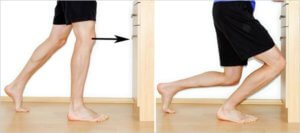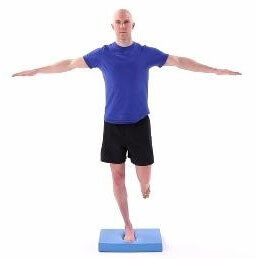
3 simple ways to manage your ankle injury
Acute ankle injuries are one of the most common seen in private practice. An ankle sprain can injure the joints and the soft tissues; affecting your ankle function. If you have rolled your ankle to the outside, this is called a lateral ankle sprain, or an inversion sprain. The ligaments that may be affected with this injury are the anterior-talo fibular ligament, the calcaneo-fibular ligament, and the posterior talo-fibular ligament.
Most people will be aware when they’ve rolled their ankle. Symptoms of a lateral ankle sprain include pain, swelling, and bruising. It may also be difficult to walk, stand, or run, depending on the injury. If you are unable to walk more than 4 steps after rolling your ankle, it can be an indication that an X-ray is required.
We are aware that everyone recovers differently from their injury. This can be influenced by several factors; some of which include, the severity of injury, a previous history of ankle injury, age and individual ankle biomechanics.
Despite these differences, research suggests there are a few common components, that if addressed can assist you in achieving optimal recovery.
In the initial 4-7 days the priority is around managing the swelling, using ice regularly to reduce the excess response. Beyond that initial acute period there are a few elements that you need to ensure return to full capacity.
These include:
Ankle range of movement
After injury, the joints in the ankle can become quite stiff. Regaining and then maintaining your movement at the ankle joint is important for performance of everyday activities like walking, going up stairs and running.
One simple stretch you can perform at home to improve this is:
Exercise – Knee to wall
How to perform:
- Place your hands against a wall
- Bring the knee of your affected ankle towards the wall, keeping this heel flat on the floor
- Move your opposite leg backwards – this heel can come off the floor
- Bring the knee of your front leg to the wall (if your knee touches the wall easily, gradually move your toes further away until your knee can only just touch with your heel still flat)
- As your movement improves, the distance between your toes and the wall should increase
- Perform 5 sets of 10-second holds, twice a day

Strength
A loss of strength in the calf muscle is quite common after ankle injury. Building up the strength and endurance of the surrounding muscles and ligaments of the ankle and foot can be beneficial for optimal performance of your daily activities and an important component in returning to sport.
An easy exercise to increase your calf strength is:
Exercise – Single leg calf raises
How to perform:
- Using a wall for balance, stand on the affected ankle
- Slowly raise up heel from floor (focus on placing your weight through your big toe and the ball of your foot)
- Slowly lower your heel down to the floor
- Perform 3 sets of 12 repetitions once a day

Ankle proprioception
This is your body’s awareness of its joint position in space.
Chronic instability is common after an ankle sprain due to impaired postural control and can increase your risk of re-injury. Balance training programs which target proprioception have been demonstrated to significantly improve ankle stability and decrease the risk of ankle sprains.
One way you can work on this is:
Exercise – Single leg balance

How to perform:
- Stand on your affected ankle with the opposite knee bent and ankle suspended in the air
- Try to maintain your balance on this foot for 30 seconds
- To make this harder, try closing your eyes for 30 seconds or standing on a soft cushion.
- Perform 3 sets of 30-second holds twice a day


Returning to sport
If you are considering returning to sport it is important that your ankle range of movement, strength, balance and proprioception are all at an appropriate level to re-engage in your specific sport. There are several functional activities like running, jumping, hopping, zig zagging, twisting that are necessary to be performed in each game. If you are uncertain about your level of readiness, come into Fusion Physiotherapy and your physiotherapist will be able to re-assess and help you decide if you are ready to return to training and competition.
Addressing these components can reduce your risk of re-injury and be the key to successful rehabilitation and management of your ankle injury. Good luck with your recovery; if you have any queries or would like to progress these exercises don’t hesitate to book an appointment with your physiotherapist.

